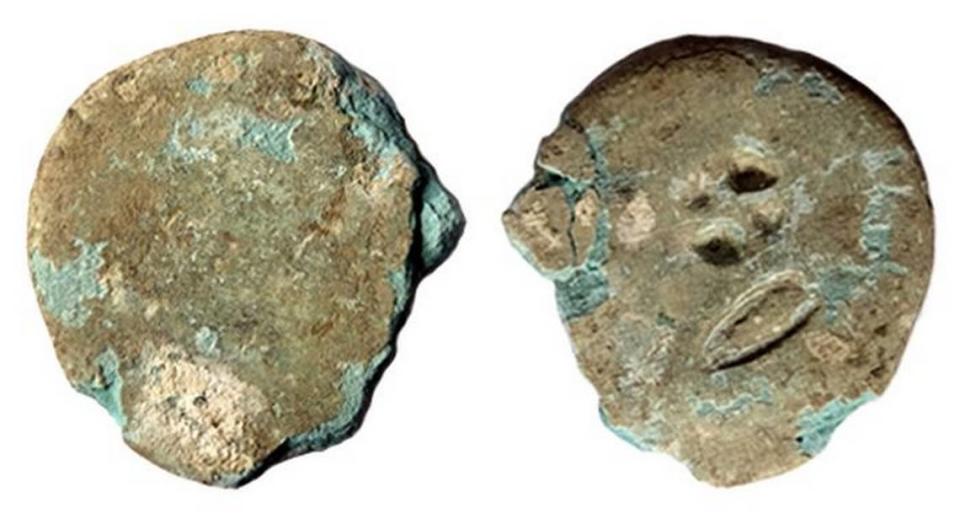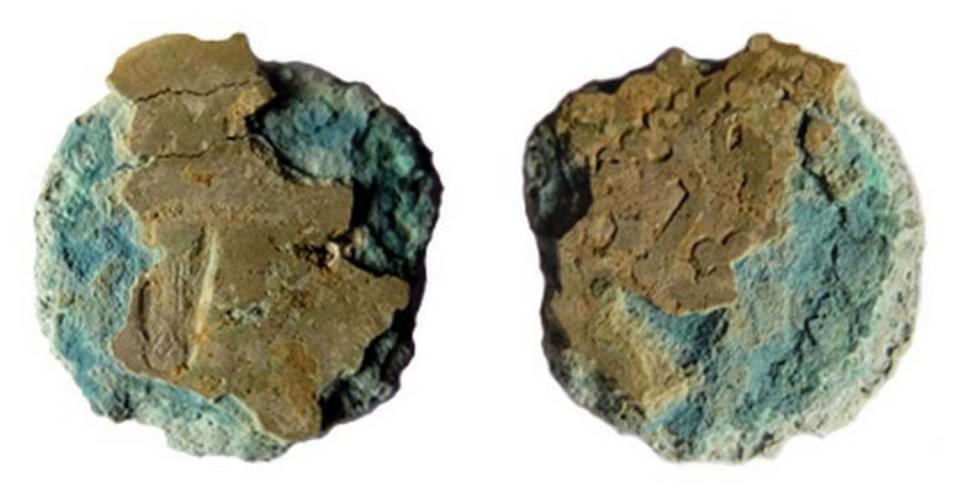‘Lost’ Roman coins uncovered at fortress belonged to infamously brutal military troop
Excavating a fortress in Georgia, archaeologists uncovered several hundred coins. They were small, tarnished discs that might have been easily overlooked amid the much more extravagant and well-preserved ruins.
Taking a closer look, archaeologists noticed something on the coins — some added “stamps,” Science in Poland said in a May 31 news release.
The “stamps,” often called “countermarks,” were added to the coins after their original designs had worn away, archaeologist and numismatist Piotr Jaworski said in the release.
Photos show the markings include four raised bumps and leave an X-shaped negative space.
These particular coins were stamped by one of ancient Rome’s infamously brutal military troops: the Legio X Fretensis, Jaworski said.

The battles of the Legio X Fretensis have been relatively well documented beginning around 48 B.C. and continuing until 230 A.D., according to the World History Encyclopedia. The legionary troop was renowned for its “tenacity” and “loyalty” to the emperor, the outlet reported. The legion fought everywhere from modern-day France to North Macedonia and Armenia to Syria.
The Legio X Fretensis gained its notorious reputation for its “bloody suppression of Jewish uprisings” in Jerusalem, the release said.
During the siege of Jerusalem, the Legio X Fretensis, along with other military troops, attacked the city for four months, according to the Wold History Encyclopedia. The siege killed 1 million people, and 70,000 more “were taken prisoner.” The legion stayed behind, “building a base on the burnt ruins” of Jerusalem.
Archaeologists had not found evidence of the legion in Georgia — until now, experts said.

The “lost” coins were marked by the Legio X Fretensis and brought to the Gonio Apsaros fortress during the winter of 114 A.D., Jaworski said. The soldiers used the coins to buy necessities during their winter stay, leaving hundreds of coins in circulation when they left.
The legion stayed at the Gonio Apsaros fortress during a “critical time” for the empire, Jaworski said. The military would leave Georgia and conquer two more provinces, Mesopotamia and Armenia, bringing the empire to its geographical peak.
The Gonio Apsaros fortress is in the southern Georgian city of Gonio. The fortress sits near the coast of the Black Sea and the modern-day border of Georgia and Turkey.
The fortress was built around the first century A.D. along the “remote” northeastern edge of the ancient Roman empire as a strategic defense point, the release said. Most of the remaining ruins date to the fortress’ later occupation, a period around the sixth century.
The ruins are one literal example of a common Georgian saying. The saying, according to Carnegie Europe, is translated as, “The Roman Empire is extinct but Georgia still exists.”
Construction workers spot ‘toolmarks’ on stones — and uncover ancient site in Malta
Ancient European burials show ‘complex’ gender expression existed in past, study says
Teen metal detectorist scouring field with mom finds Viking-era artifact, photos show

